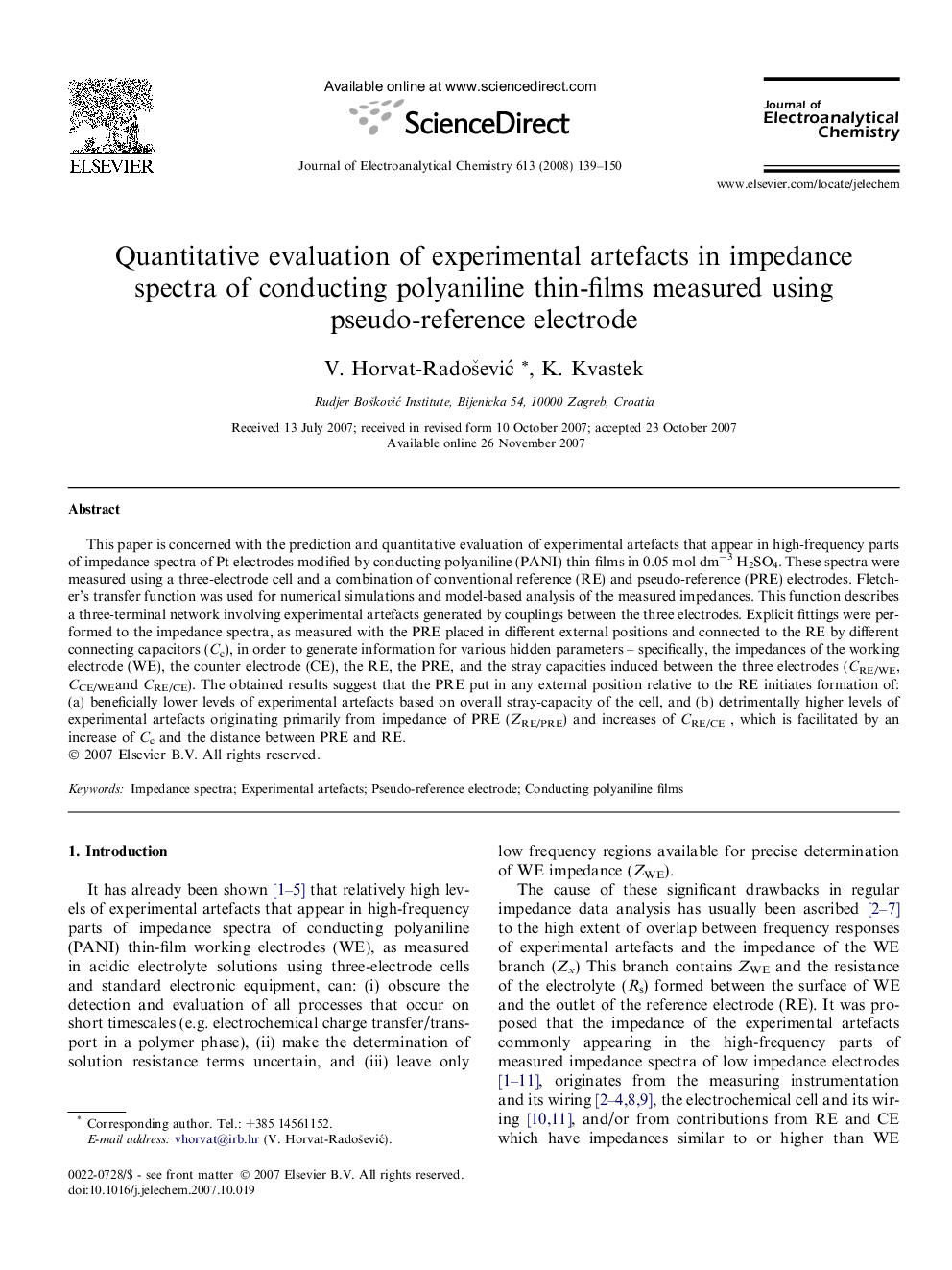| Article ID | Journal | Published Year | Pages | File Type |
|---|---|---|---|---|
| 220744 | Journal of Electroanalytical Chemistry | 2008 | 12 Pages |
This paper is concerned with the prediction and quantitative evaluation of experimental artefacts that appear in high-frequency parts of impedance spectra of Pt electrodes modified by conducting polyaniline (PANI) thin-films in 0.05 mol dm−3 H2SO4. These spectra were measured using a three-electrode cell and a combination of conventional reference (RE) and pseudo-reference (PRE) electrodes. Fletcher’s transfer function was used for numerical simulations and model-based analysis of the measured impedances. This function describes a three-terminal network involving experimental artefacts generated by couplings between the three electrodes. Explicit fittings were performed to the impedance spectra, as measured with the PRE placed in different external positions and connected to the RE by different connecting capacitors (Cc), in order to generate information for various hidden parameters – specifically, the impedances of the working electrode (WE), the counter electrode (CE), the RE, the PRE, and the stray capacities induced between the three electrodes (CRE/WE, CCE/WEand CRE/CE). The obtained results suggest that the PRE put in any external position relative to the RE initiates formation of: (a) beneficially lower levels of experimental artefacts based on overall stray-capacity of the cell, and (b) detrimentally higher levels of experimental artefacts originating primarily from impedance of PRE (ZRE/PRE) and increases of CRE/CE , which is facilitated by an increase of Cc and the distance between PRE and RE.
